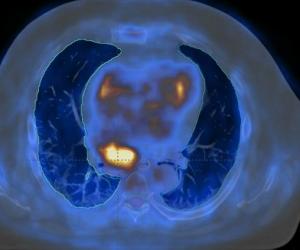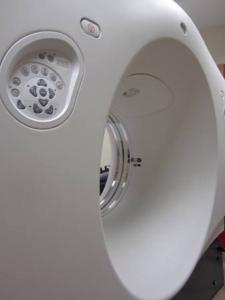Lung cancer early detection program
Frequency
Lung cancer is the leading cause of death in industrialized countries and smoking is the cause of most of these tumors, both in active (representing 85% of patients) and passive smokers as well. The risk of disease increases with the number of years that the individual has smoked. Quitting reduces the risk of lung cancer significantly even after many years of smoking. The causes of the disease are not entirely clear in the case of non-smokers or people with little exposure to tobacco smoke although alterations in genes involved in the development of lung cancer have been identified.


Early detection
Specialists in the Respiratory System, Endoscopy, Thoracic Surgery, Genetics, Medical Oncology and Radiation Oncology work together in the Program for Early Detection of Lung Cancer in order to rule out the presence of lung cancer or diagnose it. The entire protocol treatment is implemented with the coordination of the committee of specialists in lung cancer.
The program includes:
- Laboratory tests
- Radiological examinations: In November 2010, the NLST (National Lung screening Trial) reported that there were 20% fewer deaths from lung cancer among trial participants who had been studied with low-dose CT versus a chest X-ray. iTAcC has the radiological means (64-slice CT) in order to conduct a radiological study for early diagnosis of lung cancer. It is able to detect the presence of pulmonary nodules in patients at risk and compare the evolution in those cases that are less than 7 mm.
- Molecular and genetic studies are specifically aimed at the identification of lung cancer or predisposition for the disease. Those persons who have a high genetic risk of developing the disease are identified. This gives us the opportunity to perform an early diagnosis through a specific monitoring program as well as being more effective in treating this type of cancer.
- All positive cases are evaluated by the iTAcC lung cancer committee.
Quit smoking program
Medical Evaluation: It consists of an interview to rule out pathologies related to the consumption of tobacco, an exhaustive blood analysis, measurement of exhaled carbon monoxide (CO) and spirometry for measuring lung capacity. Our psychologist will test your level of nicotine addiction during the evaluation using the Fagerström test. The level of motivation to quit smoking is determined by completing a questionnaire.
Personalized Intervention: it is led by a psychologist and in coordination with the medical team. If necessary, nicotine replacement medication or administration of varenicline will be prescribed. The latter interferes with the nicotine’s trigger mechanism. Office visits are regularly scheduled, starting the following week. The usual treatment length is a minimum of 6 to 8 sessions although this depends on the needs of the individual patient.
The stop smoking program consists of iTAcC’s team of medical professionals working together with clinical psychologist Silvia Echavarria Doussout.



